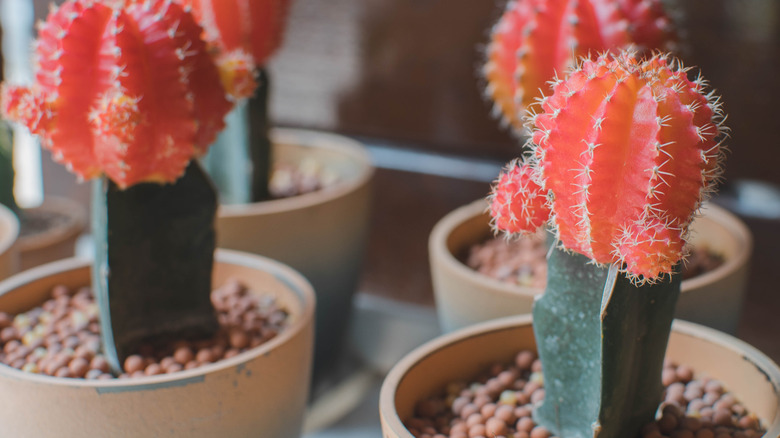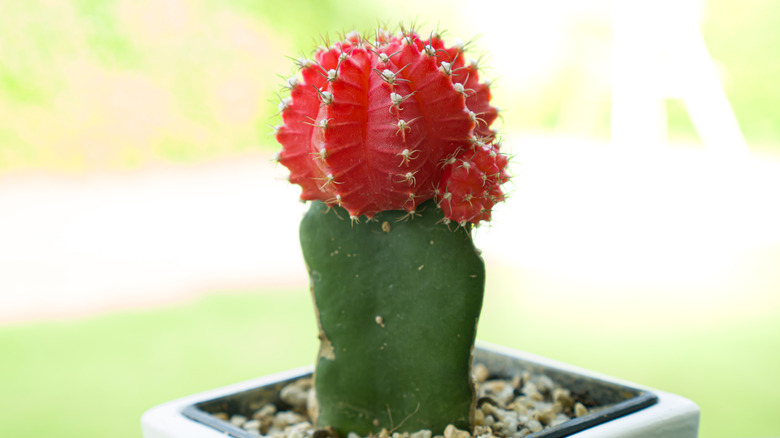These Popular Cactuses Are Actually Two Grafted Species. Here's How To Care For Them
When searching for plants at the garden center, you may have encountered one of these unique cacti. Although they appear to be one singular plant, they're actually two separate plants grafted together. The vibrant top is referred to as a scion, and the base of the plant is the rootstock. Although there are several types of grafted cacti, the moon cactus (Gymnocalycium mihanovichii) is one of the most common scions, and their base is often a species of Harrisia, Hylocereus, Trichocereus, or Hylocerus. Because most scions don't produce chlorophyll on their own, attaching them to another plant allows them to receive water and nutrients from the rootstock. Not only does grafting allow you to experiment with different colors and shapes, but the combination of these cacti makes them grow more quickly than their non-grafted counterparts.
Grafted cacti are houseplants that even beginners can grow and are perfect for adding a pop of color to your plant display. As cacti, they thrive on neglect and won't need as much watering as most other indoor plants. That said, since the two species often have their own unique care preferences, you'll have to strike the right balance to help them grow their best.
Caring for a grafted cactus
Cacti are houseplants you barely need to water, making them a lot more low-maintenance than those that need frequent hydration. Hardy in zones 9-11, these plants thrive in warm deserts where there's very little rainfall, so they store water in their stems. Make sure you never overwater these plants because they are vulnerable to root rot. They prefer their soil to dry out between waterings, so you should only give them water when the top inch of the soil is dry. Additionally, these plants can't withstand waterlogging and require well-draining soil and a pot with drainage holes. For an added nutritional boost, apply a balanced cactus fertilizer at the beginning of the growing season.
Although the scion and rootstock agree on many things, they don't share the same love for the sun. Many rootstocks can grow easily in hot, direct sunlight, but most scions are a bit more sensitive. To keep both parts of the plant happy, it's best to choose a spot where your grafted cactus can receive bright, indirect light. If growing outdoors, choose an area that's partially shaded, especially during the afternoon when the harsh rays can burn the delicate top. With the right care, your grafted cactus could live a decade or two, depending on the species. Most grafted cacti reach about 3 inches in height and width at maturity, but certain species can grow several feet tall.

